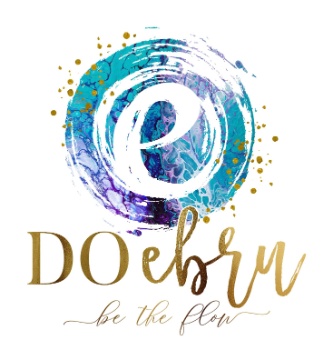This is an article from Qatar Airway’s flight magazine. Hikmet Barutcugil, one of the best Ebru Artists in Turkey, explains how he started Ebru. It is the same feeling with everyone: love at first sight:)
HIKMET BARUTCUGIL IS TURKEY’S FOREMOST LIVING EBRUZEN, or master of marbling, a traditional Turkish art form that’s been around for centuries
The technique of paper marbling – manipulating paint on the water to create beautiful works of art on paper – is thought to have originated in Persia during the 15th century, though as early as the 10th century the Japanese had a form of marbling called suminagashi. Introduced to the West via the Ottoman Empire, the art of making ‘Turkish paper’ became tremendously popular in European bookbinding and stationery, especially in Victorian England where it was commonly used for endpapers in books.
When Hikmet Barutcugil enrolled at the Istanbul State Academy of Fine Arts in 1973 to study textiles, marbling was, like many time-honored crafts, on the verge of dying out in Turkey. Inspired by a calligraphy professor to study traditional Turkish art forms, Barutcugil stumbled upon ebru.
“It was love at first sight; I can’t describe it any other way. It had a mysterious beauty,” Barutcugil recalls. Today he is Turkey’s most prominent ebruzen, recognized not only for helping to revive the tradition but also for developing his own school of marbling, known as Barut Ebru. His fame extends well beyond the borders of Turkey: he has travelled to more than 30 countries to lecture, teach, and show his work, taken part in close to 200 shows, and published almost a dozen books and exhibition catalogs.
Barutcugil largely taught himself – through his own research and ‘by trial and error’ – because the one genuine ebru master left in Istanbul in the early 1970s was not teaching the craft. “It’s better that I didn’t study with him; if I had, I would only have learned his style. The fact that I had to discover it on my own opened my horizons and gave me freedom; it was actually an advantage,” says Barutcugil.
Whereas Turkish marbling traditionally made use of a limited number of colors and patterns, the style developed by Barutcugil is much more fluid and abstract, allowing colors to blend together, resulting in subtle in-between hues. His most characteristic pieces feature a wide spectrum of color tones that ripple across the page like images of rock strata or sound waves. The artist also pioneered the use of marbling techniques on materials other than paper, such as wood, fabric, and even ceramics, and he is likewise known for combining marbling with other art forms, including painting, miniatures, and calligraphy.
Barutcugil believes people find marbling so mesmerizing because of the designs’ uncanny resemblance to the natural world. Different patterns may resemble veined stone or banded rock, living tissue magnified thousands of times, the swirls of natural whirlpools, or butterflies’ wings. “We can describe the technique in technical terms, but we can’t define the patterns themselves. The images are so similar to those found in nature – whether the coloration of the planet Venus or a microscopic view of a cell magnified 4,000 times – that one is astonished. Perhaps, through ebru, God is sharing secrets with us,” remarks Barutcugil.
Indeed, for some, ebru has a mystical significance, and in Ottoman times it was often the artisans of the Sufi dervish orders who practiced the art. Marbling is mysterious, Barutcugil says, because the designs emerge naturally and the artistic process is one of the on-the-spot improvisation. “Marbling is something that happens by itself. We can’t intervene very much; it is spontaneous. It’s a natural occurrence that can’t be predicted.” To emphasize his point, he cites a verse from the Quran on the divine properties of water (chapter 21, verse 30): “We have made from water every living thing. Will they not then believe?”
The master at work
Almost every surface in Ebristan – Barutcugil’s workshop and studio, where he also teaches ebru – is decorated with marbling, from the ceramic floor tiles and wooden door panels to the walls lined with framed works by the artist. Located on Istanbul’s Asian side in the Uskudar district, the edifice was a mansion built for an Ottoman pasha in 1830 that Barutcugil and his wife spent a decade restoring before opening Ebristan in 1997.
On a weekday morning, a group of adult students crowd around a table as Barutcugil gives a marbling demonstration. With a brush, he sprinkles different colors of paint onto the water, then pulls a fine metal comb across the surface to create an intricate pattern. The background complete, he adds drops of green and purple, drawing out the pools of paint with a bradawl into the shape of a tulip (“The most famous Turkish flower,” Barutcugil notes) before laying a piece of paper over the water and expertly picking it up with the design intact.
In just minutes – and in a way that appears almost effortless – the piece is complete, needing only to dry and set. That one-of-a-kind works of art can be created with such apparent ease and speed is the magic of marbling, but the flip side is the relative difficulty of manipulating the materials. While some of Barutcugil’s students have become professional artists in their own right, many are content to practice marbling simply as a hobby.
In 2013, Barutcugil will be celebrating the 40th year since he embarked on what would become his lifelong passion, with a retrospective of his work that opens in February at the prestigious Çiragan Palace Kempinski, Istanbul. But even after all this time, his journey continues. With the humility of a Buddhist monk, he says, “It’s been 40 years and I still don’t know everything. The more I learn, the more I realize how little I know.”


0 Comments